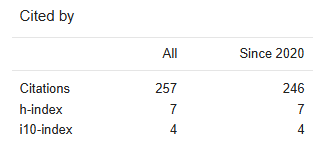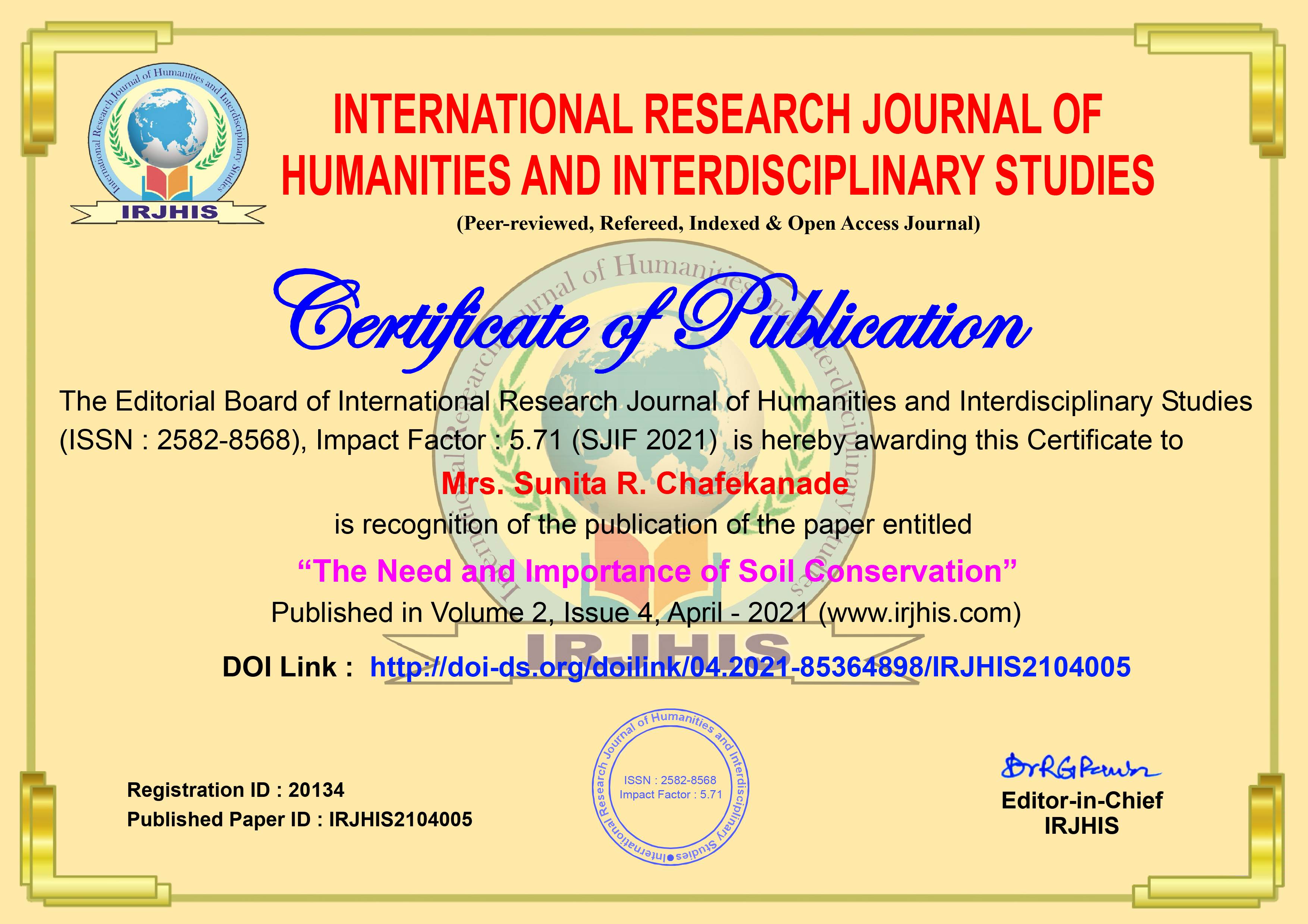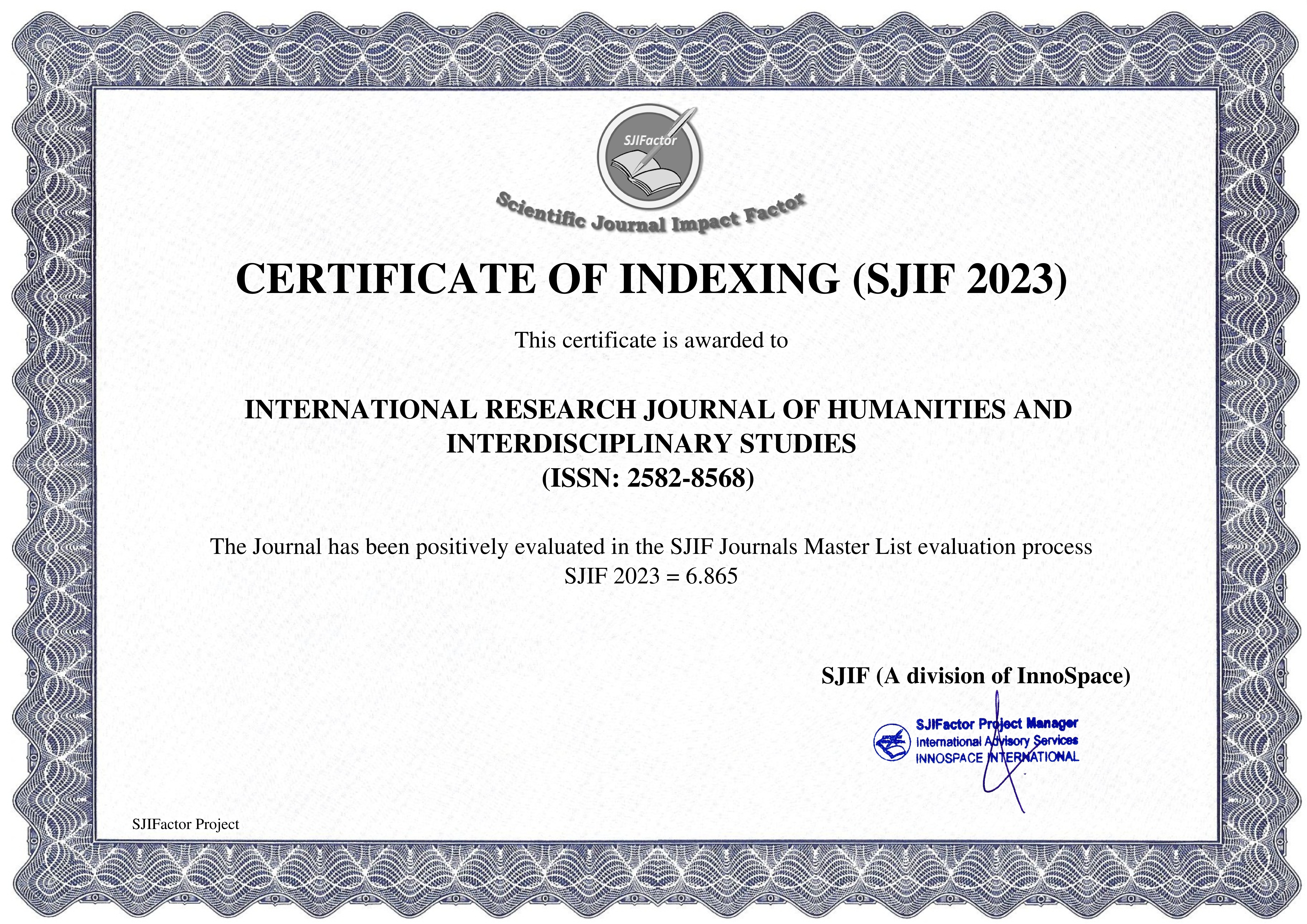Paper Details


Call For Papers
Volume 06, Issue 11
Frequency: 12 Issue per year
Paper Submission: Throughout the Month
Acceptance Notification: Within 2 days
Areas Covered: Multidisciplinary
Accepted Language: Multiple Languages
Journal Type: Online (e-Journal)
Announcement

Publish books with ISBN Number
- Edited Book
- Text Book
- Ph.D Thesis
- Conference Proceedings
ISSN Number:
2582-8568
Journal DOI No:
03.2021-11278686
Title:
Tribal Rebellion on the Question of Peasant Consciousness
Authors:
Cite this Article:
,
Tribal Rebellion on the Question of Peasant Consciousness, International Research Journal of Humanities and Interdisciplinary Studies (www.irjhis.com), ISSN : 2582-8568, Volume: 4, Issue: 6, Year: June 2023, Page No : 146-150,
Available at : http://irjhis.com/paper/IRJHIS2306020.pdf
Abstract:
Abstract: The peasant society of India has repeatedly roared in protest as a consequence of the colonial rule. The wave of protest turned into an uprising. In this protest and rebellion, along with the common farmers, the people of the tribal community also played an equal role. But as the rebellion of the tribals and marginal peasants who participated in the peasant struggles was spontaneous, the wave of rebellion spread over a wide area. The insurgents fought from within the inaccessible jungles with the shelter of tactical warfare. Again, in many such revolts, the spark of rebellion was spread from discontent and protest. Such a struggle, however, is not compatible with nationalist movements. As the boundaries of these movements did not extend to vast areas of India like the nationalist movements, the duration of the movements was also short-lived. More than that, regardless of the spontaneous role the peasants took in such revolts, the extent to which the consciousness of the peasantry influenced these revolts remains a question. Different groups have different views on the development of peasant consciousness in peasant revolts. Historians belonging to the lower classes did not want to emphasize the spirit of the peasant revolt. A semblance of consciousness must be observed in some cases in such debates as well as rebellions. So this article will try to discuss the thoughts related to the development of consciousness of the farmers.
Keywords:
Marginal Peasant, Protest, Rebellion, Consciousness, Lower Class
Publication Details:
Published Paper ID: IRJHIS2306020
Registration ID: 21090
Published In: Volume: 4, Issue: 6, Year: June 2023
Page No: 146-150
ISSN Number: 2582-8568
Download Full Paper: Click Here
Article Preview:





